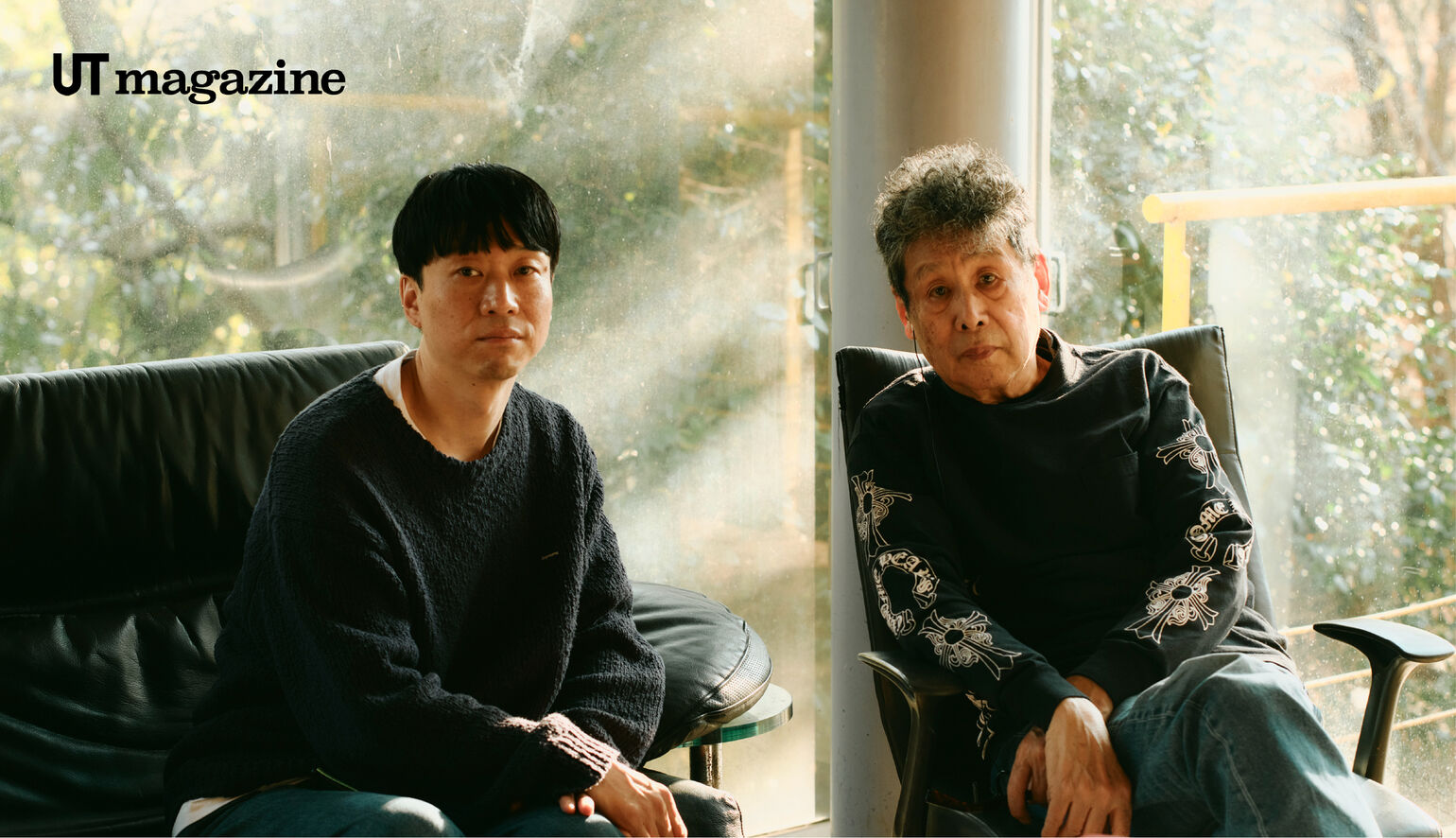
Talk on the Wild Side: Kosuke Kawamura and Tadanori Yokoo
Apr 25, 2025
UT
Kosuke Kawamura Decodes Tadanori Yokoo’s Creative Genius
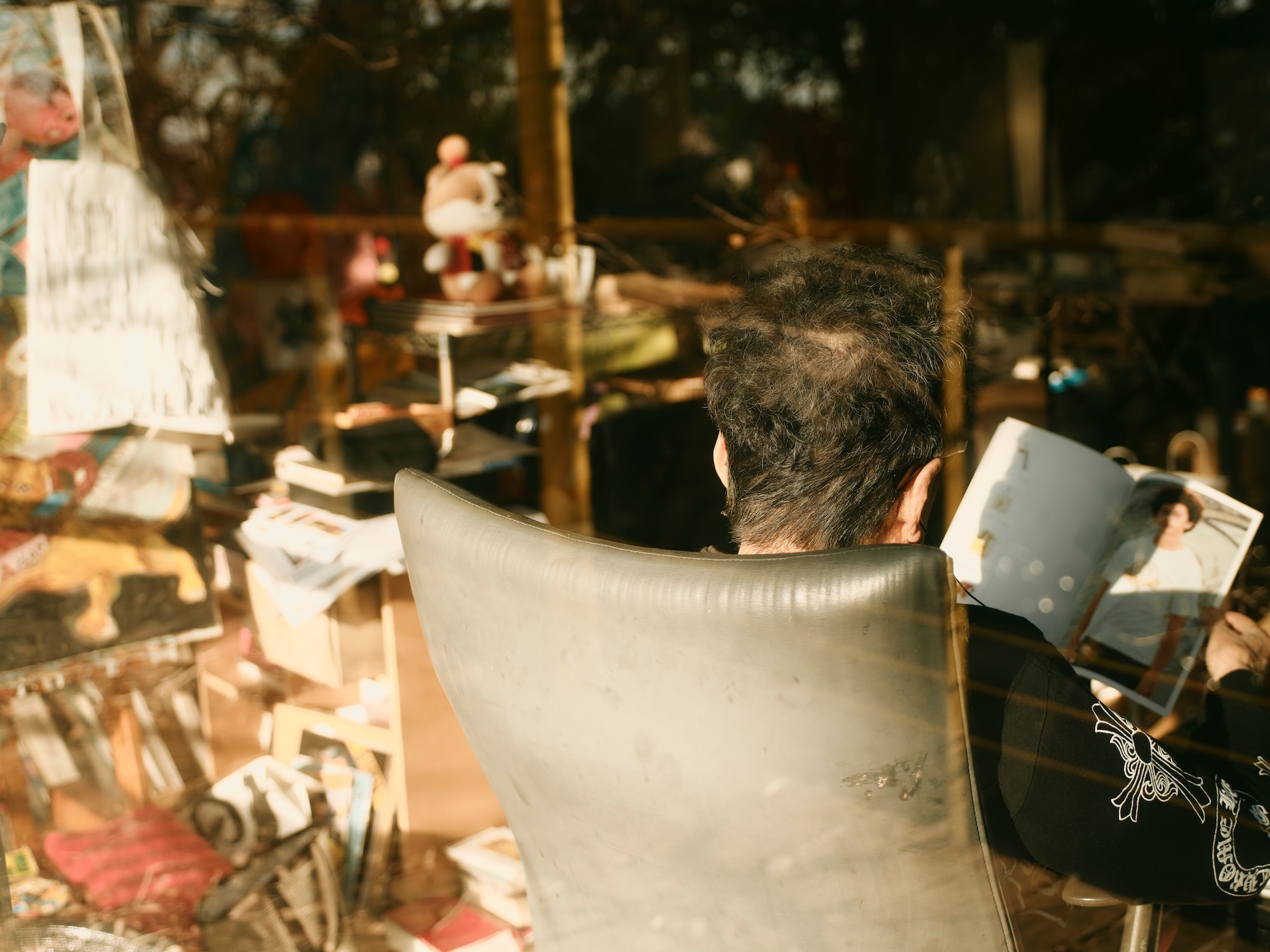
Kosuke Kawamura (KK): I first saw Mr. Yokoo’s work as a high school student, and it was a revelation for me. I saved up some money I’d received as a New Year’s gift and bought his book Yearning for Millennium(1974)which featured a collage technique that was a big inspiration to my early work.
Tadanori Yokoo (TY): Wow, that’s a lot of responsibility for me! [Laughs]. I published that artbook late in my career as a designer. I’d been a professional graphic designer for about 25 years before I turned to painting in 1981, and it’s been over 40 years since then, so my career as a painter has gone on for much longer.
KK: Do you still take on design work these days?
TY: Occasionally, yes. When there's an exhibition at my museum in Kobe (Yokoo Tadanori Museum of Contemporary Art), I'll create the poster for it. I'll also design CD jackets for musicians. Recently, I was responsible for the artwork for BUCK-TICK Exhibition 2025. I accept one or two commissions like that a year.
KK: Aside from that, do you paint every day?
TY: No, if I painted every day, I'd perish. [Laughs.] I’m creating works while making sure to take necessary breaks.
KK: Is there a difference between your creative process as a graphic designer and an artist?
TY: The creative side is the same, but the public-facing part is different. You can create art as you see fit, while design work often involves a client. There are many restrictions and conditions around what you make, as the end goal is to promote products and drive sales. The designer’s got to know how to attract people to products and how to be clever. If you design an ad precisely as the client says, the products don’t sell very well [laughs]. That’s why I wasn’t interested in understanding graphic design from a “formal” standpoint when I was young.
KK: I see what you mean.
TY: So, back then, I rarely accepted corporate commissions. I primarily worked on cultural projects related to theater, film, and music. Figures like (Shuji) Terayama, (Juro) Kara, and Tatsumi Hijikata were my main clients. Since they were creators themselves, collaboration was remarkably smooth. Not a single person ever requested revisions to my work.
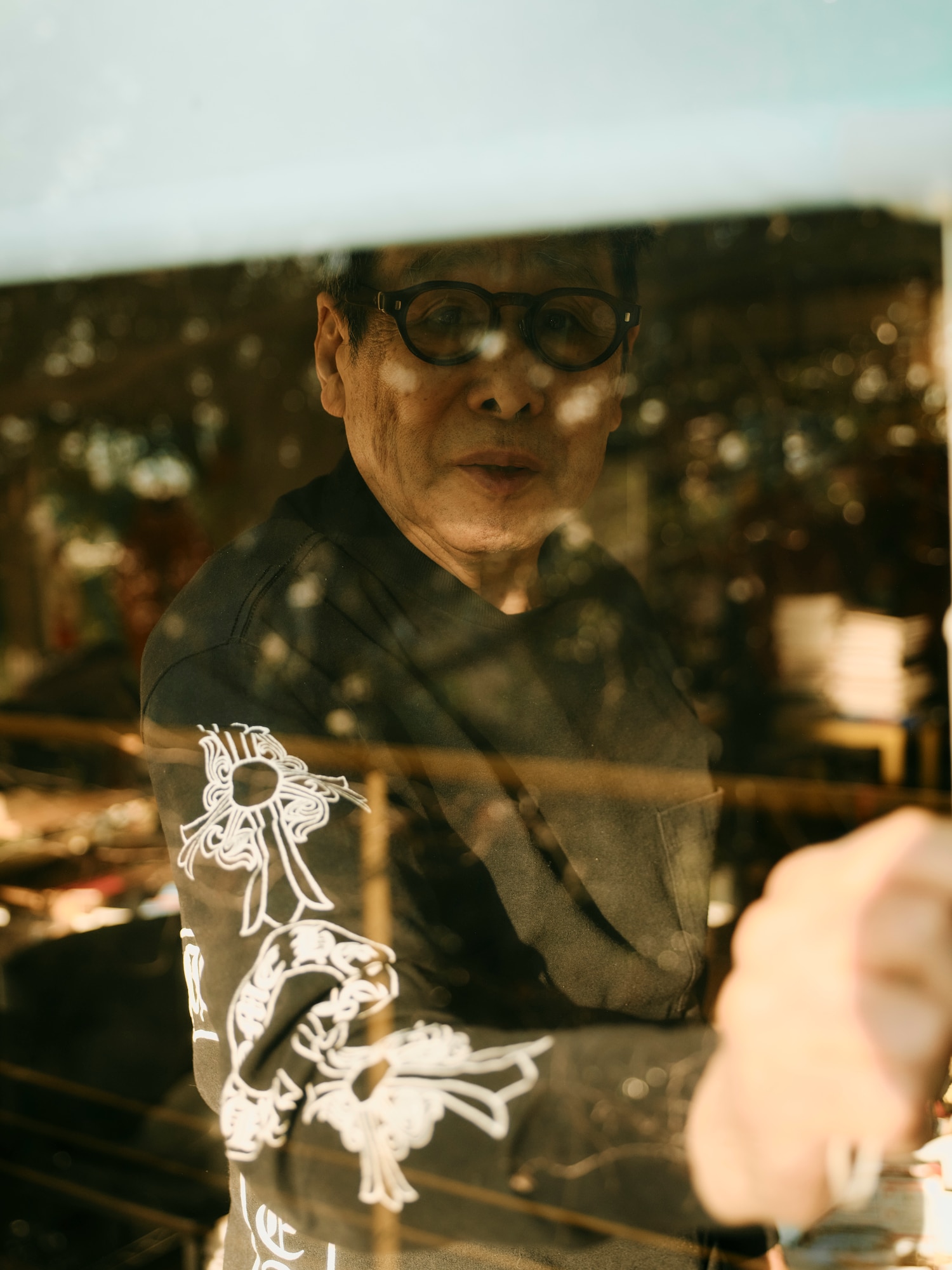
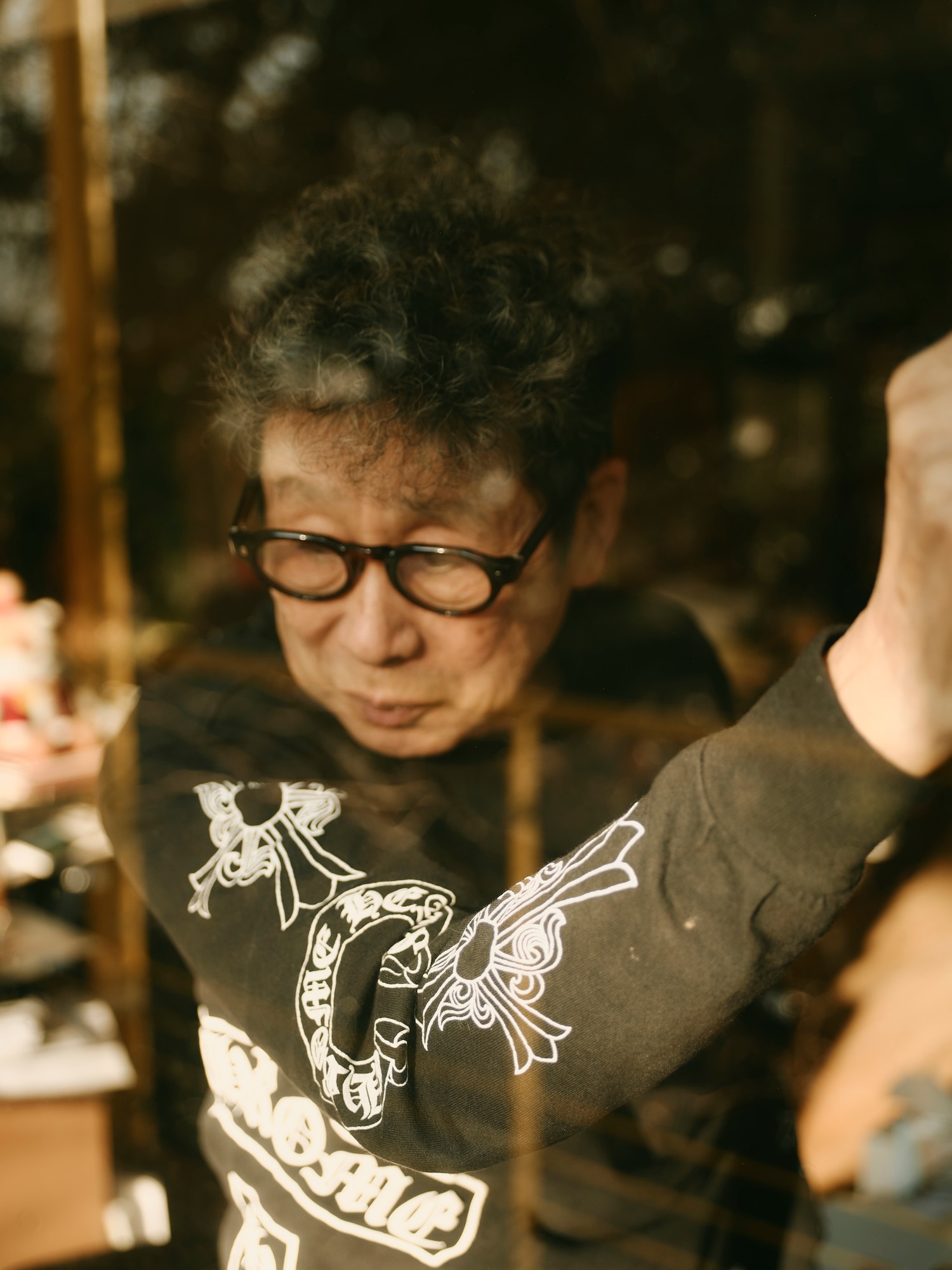
KK: That's extraordinary.
TY: They might have thought that my work was unusual. [Laughs]. But because we were operating in our own creative domains, they accepted what I presented without question. On the other hand, sponsors in the advertising industry aren't creators. They're merely clients.
KK: I understand that completely. So even then, you were designing graphics with the same sensibilities you would bring to creating art pieces.
TY: Now that you mention it, perhaps that's true.
KK: I see, and now I understand why I felt such intense energy when I saw your work as a teenager. I started my career as an artist after high school, never attending a technical school or university. I was even more impressed by your life and way of thinking after reading your autobiography. I’m also very encouraged that you continue to create freely after all this time.
TY: Freedom is challenging to achieve. We all harbor desires and obsessions. If you cannot free yourself from your ego, you cannot channel energy into your work. The most effective approach to advancing your art is to set aside any desire for fame or wealth. Instead, focus on embedding what you genuinely wish to express into your creation. The theater, film, and music people we mentioned earlier were all financially struggling, so often payment wasn't forthcoming. So even if I wanted to earn money, I couldn’t. [Laughs.] There was simply no room to maintain materialistic desires.
KK: That's a profound insight. [Laughs.] That's why your work is always powerful.
TY: Many people may seek financial success or greater recognition, but I don't believe the people I worked with were fixated on those outcomes. They were simply absorbed in what they wished to do at that moment.
KK: So focusing on your own art was the paramount priority.
TY: I'm not familiar with today's younger generations since I don’t interact with them much. But when I was young, there was no established social vision, so anything seemed possible.
KK: You mean social constraints weren't as rigid?
TY: There might have been some, but those constraints were dismantled by free expressionists, giving rise to something like a new system created by artists themselves.

KK: It sounds like a golden age for artists.
TY: It was a fertile period, but one misstep could place you in a life-or-death situation.
KK: Indeed, following post-war recovery, the 1960s represented a major turning point both socially and culturally. I was born in 1979, so my understanding of that era comes from a historical perspective. But I've been profoundly influenced by the art, graphics, and music emerging from the ‘60s psychedelic culture.
TY: There was a fundamental difference between Western and Japanese cultures in the ‘60s. American and European psychedelic culture was intrinsically influenced by psychoactive substances. In Japan, that element was absent, so most expressions were somewhat superficial. At the end of the day, authentic art emerges only from lived experience.
KK: Did you travel abroad back then?
TY: I visited New York in 1967. That was a remarkable year as The Beatles released "Sgt. Pepper's Lonely Hearts Club Band" and “Magical Mystery Tour.”
KK: Wow, what an extraordinary year!
TY: While in New York, I saw Cream perform and that was my first-ever gig where I was exposed to rock music firsthand.
KK: What?! Did you see Cream performing live?
TY: Cream wasn't particularly famous in New York at the time, but I'd heard rumors that a band that was even more remarkable than The Beatles was arriving from London, so I went to see them. Eric Clapton and Ginger Baker were performing. Of course, I didn't know their names then. During that performance, Clapton suddenly set down his guitar and left the stage. I wondered what had happened, but apparently he went to the restroom, then returned and resumed playing as if nothing had ever happened. [Laughs.]
KK: That’s truly a historical moment. [Laughs.] How many people were in attendance?
TY: About 20 or 30, I think. There were no chairs at the venue, just mats spread across the floor. Everyone sat on them while listening to their music. It was during the Vietnam War era, so young people who had dodged the draft were gathering there.
KK: So essentially it was a gathering of hippies who had avoided military service, correct?
TY: Yes. Then I visited the Haight-Ashbury district in San Francisco the following year, but by then, the hippie culture had all but disappeared. There were some vestiges of that atmosphere in the streets, but... apparently George Harrison had paraded through the streets with a procession of “flower children” the previous year, but that’s when I was in New York, so I didn't get to see any of it.
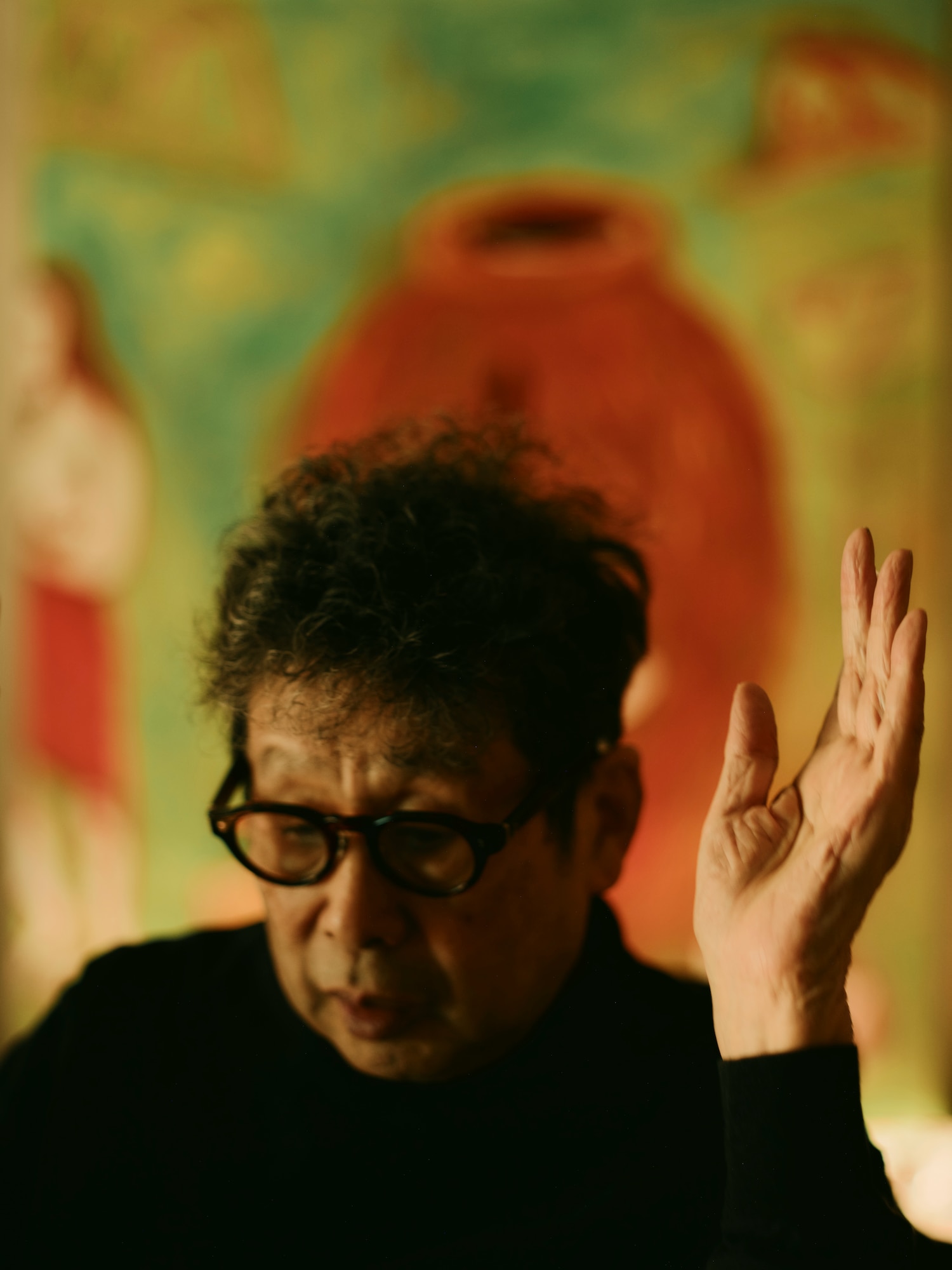
KK: Still, these are invaluable experiences... By the way, was your trip to New York for work?
TY: No, I was being relentlessly interviewed by a certain magazine, which got me really exhausted. So I decided to get out of Japan for a while. Initially, I had planned to stay in New York and Europe for 10 days each and had purchased plane tickets accordingly. But upon arriving in New York, I had a change of heart, tore up the tickets, and ended up staying there for four months.
KK: That's incredibly punk. [Laughs.] I have a personal theory that you actually are the pioneer of Japanese punk.
TY: That's not accurate. But now that I recall, when I first met David Bowie, [he said that] he possessed a catalog of my artwork.
KK: Bowie was a big fan of yours, wasn't he?
TY: Bowie told me, "I encountered punk for the first time." When I asked him where this encounter took place, he replied, "Within this book.”
KK: That's remarkable. I've always been feeling the same way as Bowie did about you.
TY: But I wasn’t familiar with punk at all. I went to see live performances by punk bands in New York and Berlin, but their songs lasted only one or two minutes. They would come on stage and finish the performance almost immediately. [Laughs.] Then I thought, "Okay, this is punk then.”
KK: It's impressive that you witnessed those performances. [Laughs.] Before the punk movement fully emerged, there were pioneering bands like The Stooges and The Velvet Underground.
TY: But at the epicenter of that scene was Andy Warhol. As you know, Warhol was an artist. Back then, there existed a distinct boundary between art and design in America, with virtually no interaction between the artists and the designers.
KK: I see.
TY: In Japan, artists and designers freely interact with various individuals, but in America, such exchange was nonexistent. Artists regarded designers with disdain. However, Warhol was originally a designer like me. He hid his professional past as a designer in order to transition into the role of an artist. Warhol never acknowledged that he had previously worked as a commercial designer or illustrator. Had he continued as a designer or illustrator while creating his signature silkscreen works, they wouldn't have been seen as art. Because Warhol created those works under the identity of an artist, they continue to be recognized as art. But in my view, his works actually embody design principles more than artistic ones.
KK: Now that you mention it, I see your point.
TY: He was fundamentally a designer but pretended that he knew nothing about design while infiltrating the art world. One must be remarkably shrewd to succeed in New York using such tactics.
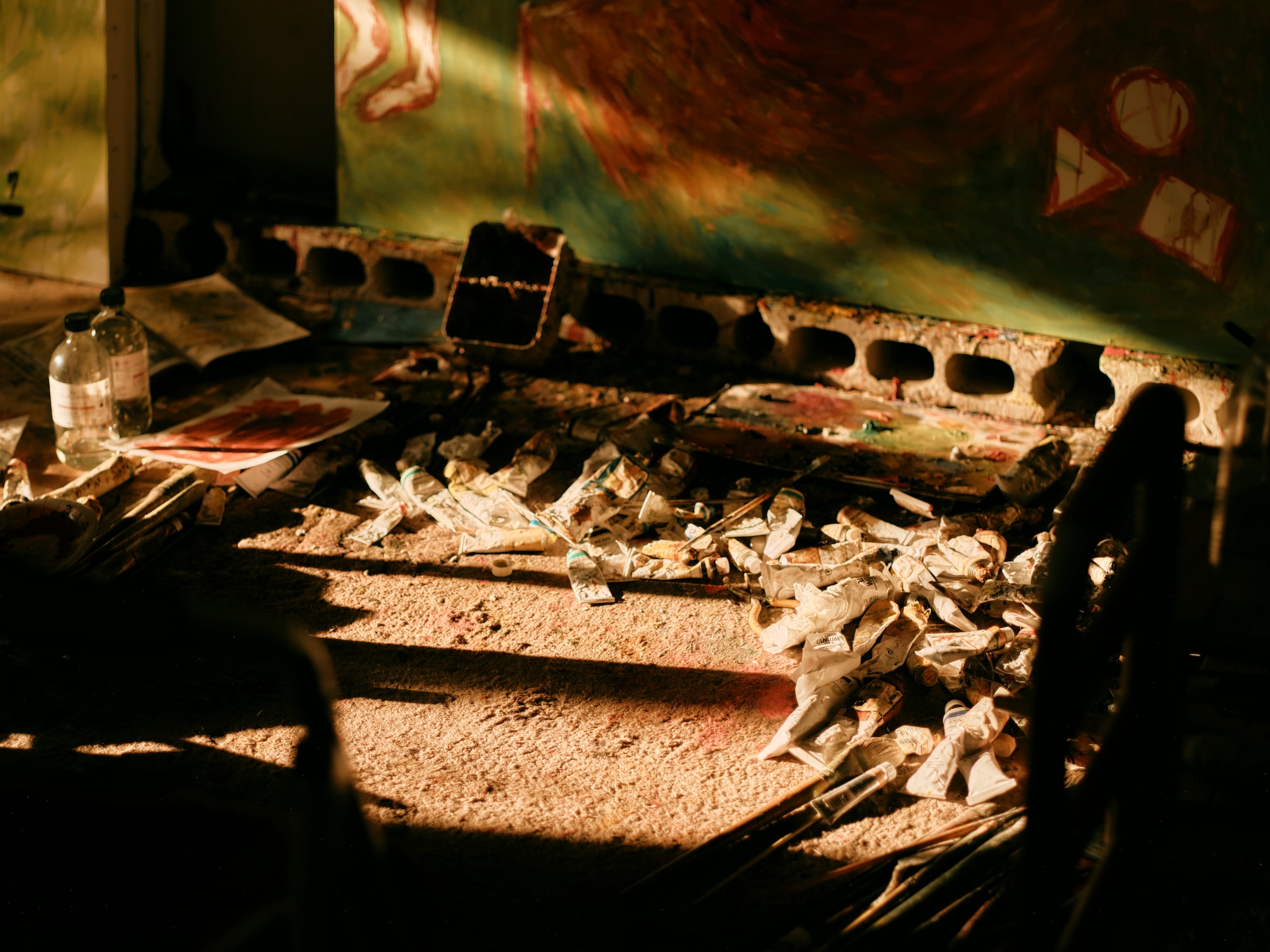

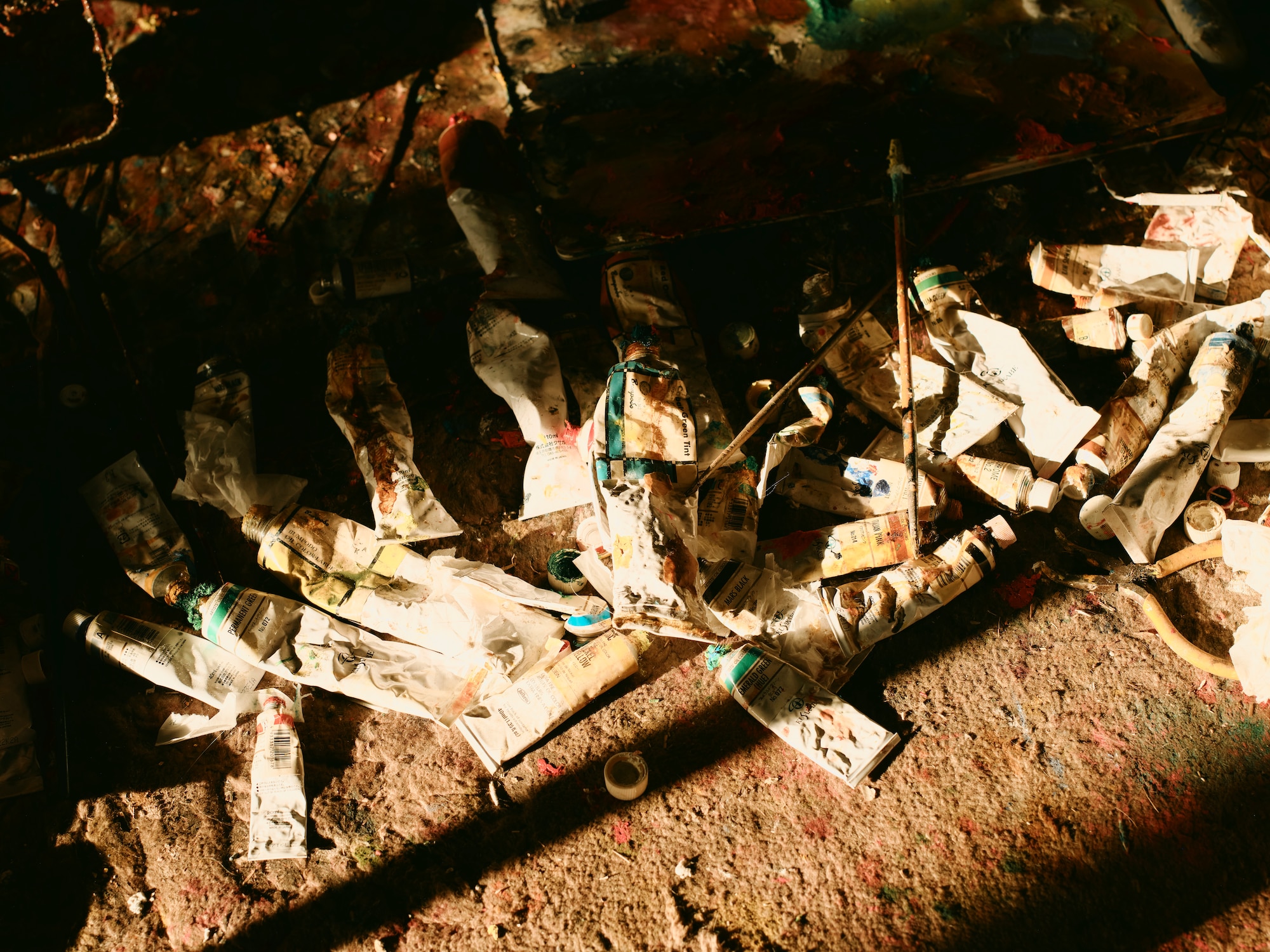
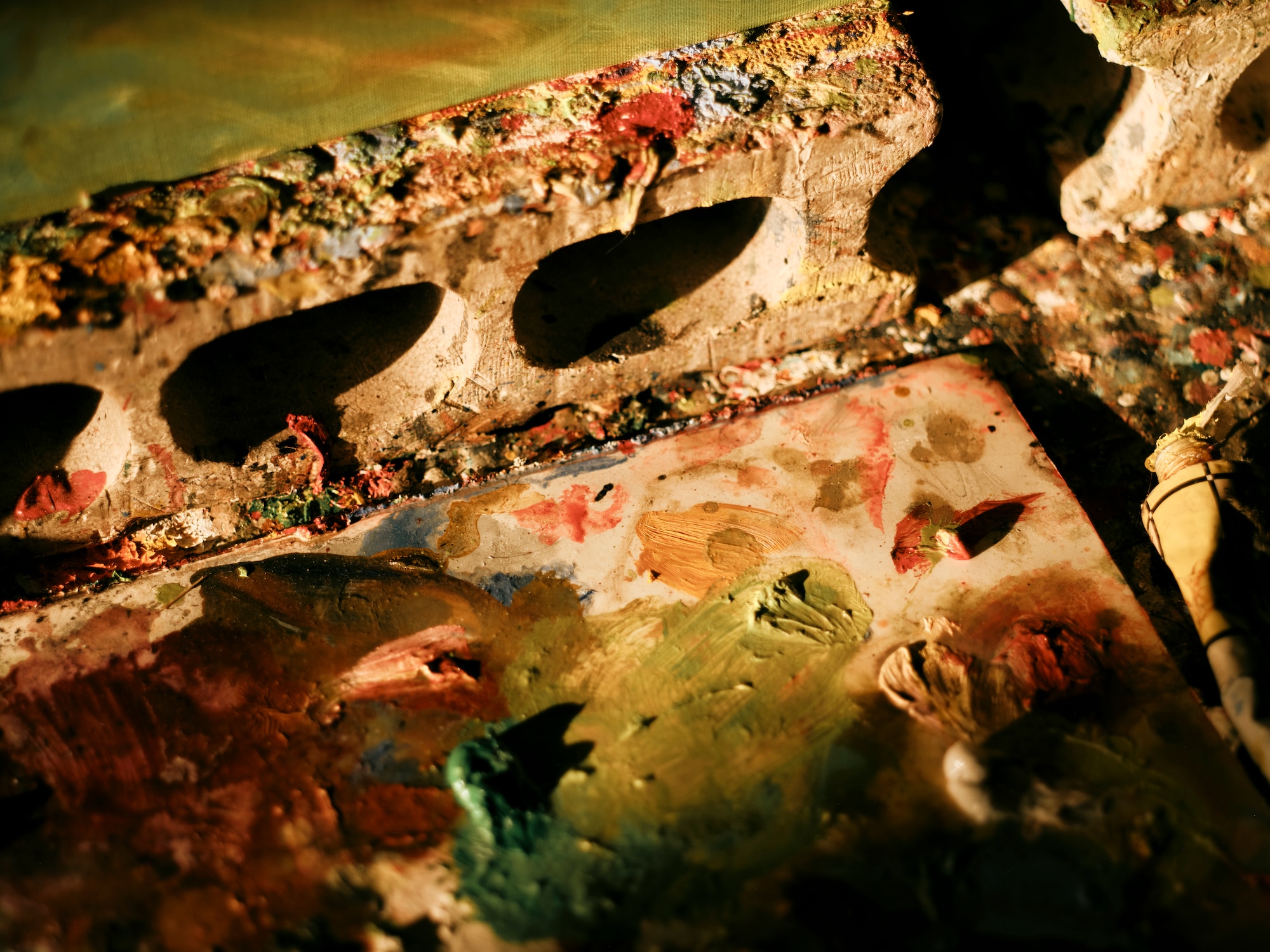
KK: I see. So you met Warhol in New York in 1967?
TY: Before traveling to America, I had made an acquaintance in Japan with an American writer who claimed to collect my posters. So I went to New York to see this writer again. It turned out that he was a friend of Andy Warhol and told me that Warhol had visited his residence the day before my arrival and had expressed considerable interest in my work. So naturally, we arranged to visit the Factory together.
KK: So you met Warhol almost immediately after arriving in New York! Do you have any photos of that meeting?
TY: I didn’t bring a camera with me, but the actual experience of seeing and hearing Warhol remains more vividly in my memory. If you have a camera, you would develop a journalistic, somewhat detached perspective, so I generally avoid taking photos during those moments. However, when I was telling others that I had met Warhol, I realized that I had no tangible evidence. [Laughs.]
KK: Indeed, as you suggest, lived experience holds greater significance.
TY: Within a week after arriving in New York, I met Warhol, and then—in rapid succession—met prominent American artists, including Jasper Johns, Robert Rauschenberg, and Tom Wesselmann. I had no intention of meeting these people before the trip, yet I found myself connecting with all of them almost simultaneously.
KK: You were clearly guided by some unseen force... As I mentioned before, when I was reading your autobiography, I sensed that your entire life trajectory has been directed by an invisible hand.
TY: Everyone experiences moments of guidance by fate. Don't you feel that sometimes? What I needed back then was precisely these encounters.
KK: Absolutely. There are so many graphic designers worldwide, but I always believe that you occupy an entirely different realm. After hearing your story today, I believe I understand why. My first exposure to your work was when I stumbled upon the Koshimaki-Osen (1966) poster in a magazine. I had no knowledge of design whatsoever, but it had an extraordinary impact on me. I simply thought it was magnificent.
TY: I still feel that I cannot surpass the Koshimaki-Osen poster. It materialized almost by a happy accident.
KK: I believe there’s no artwork that exceeds the caliber of that poster in the world.
TY: In 1972, I held a solo exhibition at the MoMA (Museum of Modern Art in New York), and I was told that the bestselling postcard at the museum shop that year was based on a work by Henri de Toulouse-Lautrec, with Koshimaki-Osen in second position.
KK: So that work truly possesses remarkable power.
TY: Consequently, Koshimaki-Osen has become tantamount to a calling card, and I sometimes feel constrained by it—as though I'm being compelled to operate within boundaries that prevent me from transcending it. It's as if I'm being restrained by my own creation, receiving an implicit directive not to produce anything superior. I have no intention to do so regardless—I don’t think I can create something of that nature again anyway. [Laughs.]
KK: My own life was similarly determined by Koshimaki-Osen. [Laughs.] It's as though I received specific instructions from that work directing my movement, like being maneuvered within Buddha's palm. Deeply affected by the impact of Koshimaki-Osen and subsequently by your autobiography, I resolved to relinquish self-control.
TY: It's better to avoid excessive control. The act of controlling essentially involves establishing internal harmony. But art loses its intrigue if it lacks elements of disharmony.
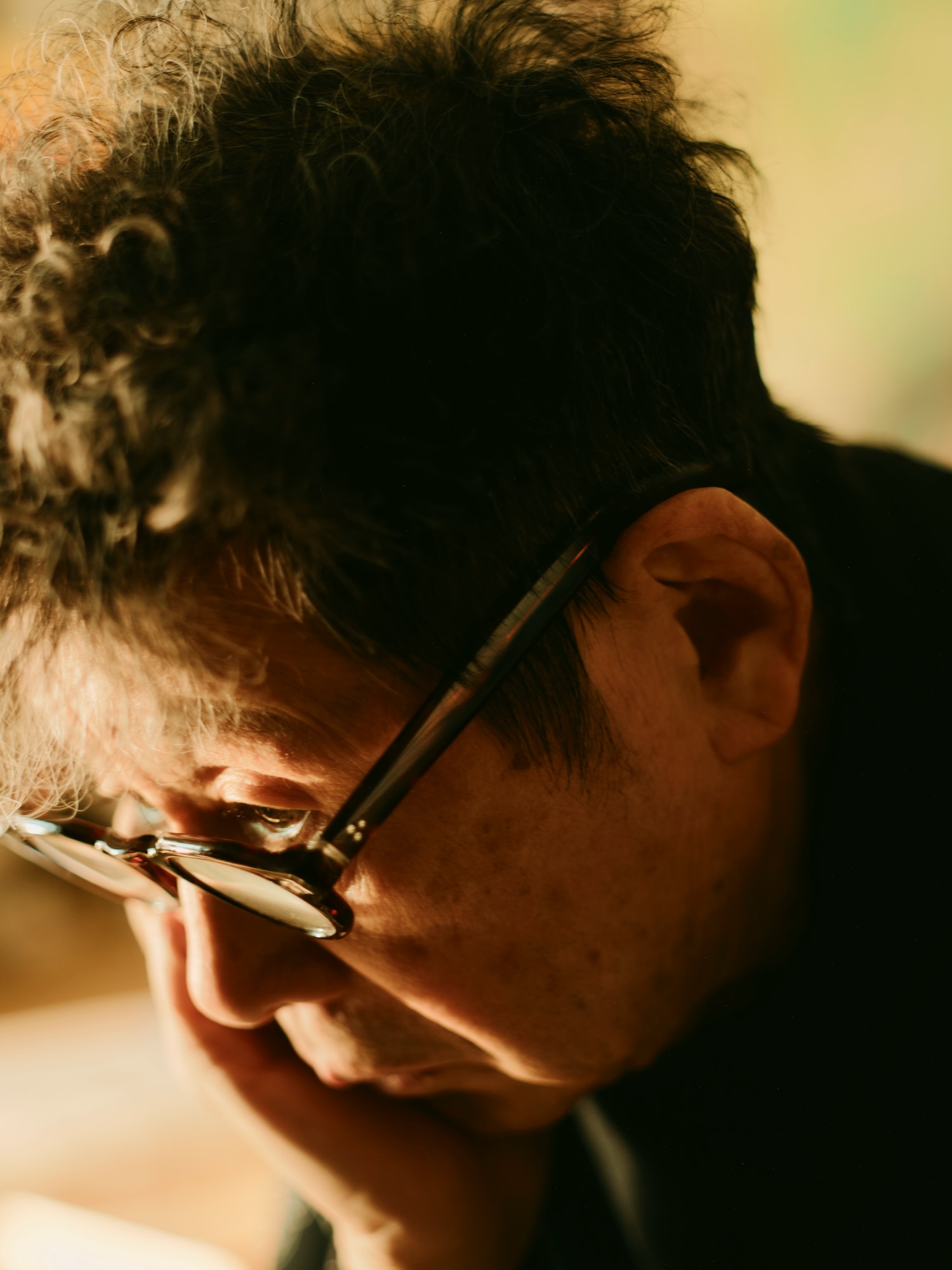

KK: I'm relieved to hear that. I believe that our meeting today represents the culmination of my way of life, which is living with a flow that is orchestrated beyond my understanding. Currently, I serve as creative director at UT, but as I mentioned initially, I discovered UT through a T-shirt featuring your work Landscape with Glasses and a Hat (1965). I actually purchased it and wore it almost always.
TY: Landscape with Glasses and a Hat predates Koshimaki-Osen. I made it when I was about 29 years old. At the time, Yukio Mishima liked the painting and indicated his desire to acquire it. The original painting remains in the possession of Mishima's son to this day.
KK: That's fascinating. Incidentally, you served as a judge for the UNIQLO Creative Award in 2005, correct? If you have specific criteria when evaluating T-shirt designs, would you be willing to share that with us?
TY: It largely depends on my state of mind. [Laughs.] Your physical condition and mood fluctuate daily, don't they? That's fundamental human physiology. I might select an entirely different work the following day. And that's perfectly acceptable.
KK: That's interesting. So you essentially call upon intuition? Perhaps this philosophy applies universally.
TY: It's advantageous to minimize overthinking. Take Y-junction as an illustrative example and imagine you must decide to proceed either right or left. If you already know that going right leads to loss while going left results in gain, most people would select left (gain). However, immediate gain might ultimately prove detrimental in the long term. Contrarily, the path to immediate loss might lead to unforeseen benefits. What if selecting the right path proved more advantageous in the end?
KK: That's deeply philosophical…
TY: Individuals with conventional judgment employ analytical thinking, evaluating everything according to metrics of profit and loss, or good and evil. But such an approach is fundamentally misguided. Non-judgment represents a state of mind detached from these considerations. Art and design flourish in conditions of non-judgment. Excessive rationalization impedes the creation of meaningful works. Calculated productions merely gratify sponsors. [Laughs.]
KK: Truly astonishing art cannot emerge through calculations alone.
TY: If designers create work merely to satisfy sponsors out of financial motivation, they inevitably diminish their own creative value.
KK: I genuinely respect and draw inspiration from artists and designers who have established their own distinctive styles without prioritizing commercial considerations.
TY: It's similarly advisable to avoid studying design theory. Such academic pursuits merely foster intellectual cleverness.
KK: So cleverness itself becomes an impediment.
TY: I've published a book titled Training to Become a Fool, because designers must fundamentally embrace foolishness. [Laughs.] However there is no compromise allowed doing so. That would constitute mere stupidity rather than enlightened foolishness. A true fool stands at the threshold of divinity. I encourage you to pursue foolishness to that profound extent.

KK: Indeed, I shall dedicate myself to embracing comprehensive foolishness. [Laughs.] Back to the subject of fashion, you've collaborated with various clothing brands. Are there particular principles you employ when designing for such commercial entities?
TY: In these collaborations, brands would select existing works they appreciate, so I might not consciously approach such projects with specific design intentions.
KK: So you don’t do graphics specifically for clothing?
TY: Recently, I created original graphics for Duran Duran's T-shirt line. But I haven't undertaken similar projects much since then.
KK: That's quite notable. [Laughs.] Do you have particular preferences regarding your personal fashion choices? I've noticed that you consistently wear Chrome Hearts items for several years now when appearing in media, and today is no exception.
TY: I’m friends with the company's president. Their items command considerable prices, don't they? When I create artwork for them, they always send me new items. [Laughs.]
KK: That's enviable indeed. [Laughs.] You have many fans among international celebrities. To my knowledge, KAWS is a particularly avid collector of your works.
TY: I published a book several years ago, which is essentially a compilation of my collage works (Tadanori Yokoo Collage: 1972-2012), and every piece featured in that publication belongs to KAWS. He probably owns about 250 works. What's particularly curious about KAWS is that, despite owning such an extensive collection of my works, their influence remains imperceptible in KAWS’s own artistic output.
KK: That's true.
TY: If he drew inspiration from my stylistic elements and put it into his own works, that would compromise his artistic integrity. Through studying my works, he has developed his unique aesthetic that resonates with younger audiences, which I consider a distinctive talent in itself. I respect his approach in this regard. When I have a solo exhibition in New York, KAWS tends to acquire all the works there, preventing other collectors from purchasing them. So it sometimes feels as though I'm creating specifically for him. [Laughs.]
KK: It's almost as if you've become his personal artist. [Laughs.] Nevertheless, I believe your work deserves broader ownership.
TY: Indeed. KAWS apparently collects works by many other artists as well, so perhaps he ultimately intends to establish a museum.
KK: That seems plausible. While acquiring original art pieces remains financially prohibitive for most people, fashion items like T-shirts offer accessible ownership and increase visibility among diverse audiences at the same time. Please have a think about collaborating with UT. [Laughs.] Finally, could you share your upcoming projects?
TY: Beginning in April, I'll have a solo exhibition titled the River of Renga at the Setagaya Art Museum (in Tokyo). I've just finished several artwork to be put on display in this exhibition.
KK: How many pieces will be featured?
TY: Around 60 works, predominantly on 150-size canvases, including additional pieces in 100-size and 10-size formats. They are all new creations produced within the past year or so.
KK: That's an impressive volume for a single year. Your creative drive clearly remains undiminished.
TY: It’s an ongoing fight with the canvas sitting in front of me, determining how to approach each surface. I sometimes question whether I'm painting the picture or if the canvas itself directs my hand. It represents a continuous cycle of such engagement. There is a profound fulfillment in this process, which largely satisfies my existential needs, leaving few additional desires.
KK: You truly embody a forward-looking approach. I cannot wait to see more of your creative output. I'm looking forward to the latest exhibition in April!
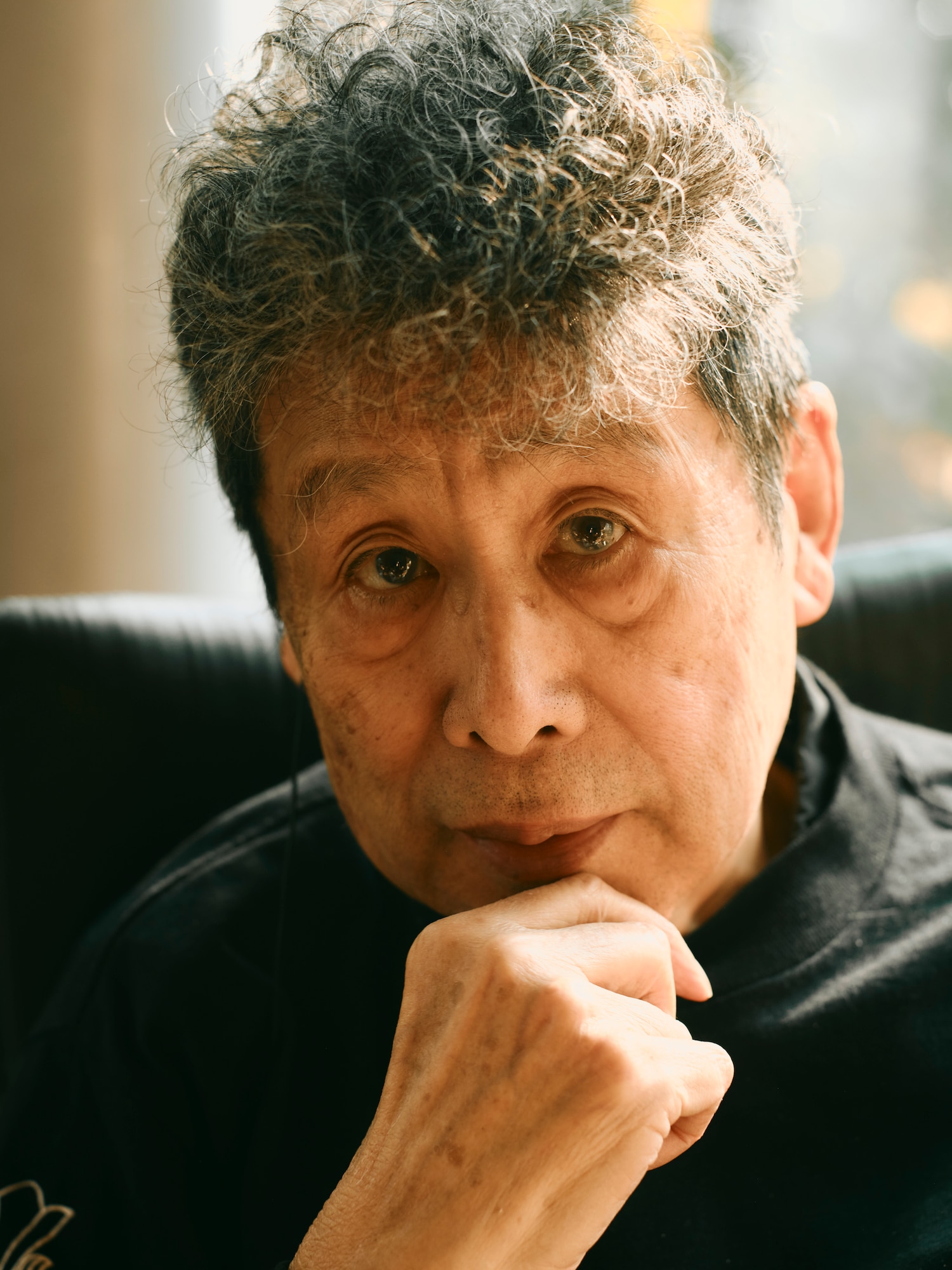
Tadanori Yokoo
Artist. Born in Hyogo Prefecture in 1936. Held a solo exhibition at the Museum of Modern Art, New York, in 1972. He subsequently held solo exhibitions at international museums all over the world. He was elected to the Hall of Fame, New York ADC, in 2000. Among the many honors he has received are the Praemium Imperiale in 2015. He was also selected as a member of the Japan Art Academy, and a person of Cultural Merit award in 2023. Holds solo exhibition River of Renga at Setagaya Art Museum, Tokyo, 2025.
[Exhibition information]
Tadanori Yokoo: River of Renga
Dates: Sat., Apr. 26 to Sun., Jun. 22, 2025
Venue: Setagaya Art Museum
Address: 1-2 Kinuta-koen, Setagaya-ku, Tokyo 157-0075
Official Site
Editor: Takeshi Kikuchi(HYPEBEAST)
Translation: Maya Nago
Contributor: Rokugo Arisaka (HYPEBEAST)
Photographer: Ryohei Obama
TOP